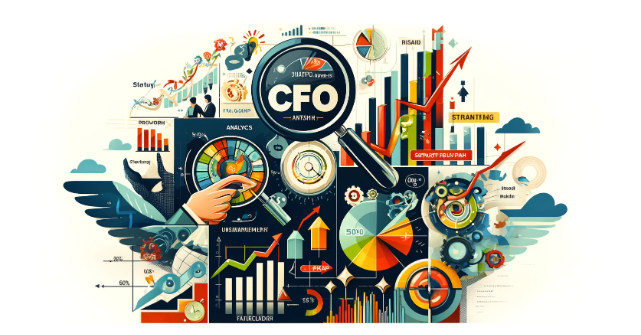Cash is the lifeblood of every business. Without sufficient cash reserves and working capital, even profitable companies can experience severe financial distress or bankruptcy. This underscores the mission-critical importance of accurate cash flow forecasting and modeling for strategic planning.
By effectively forecasting expected cash inflows and outflows over 13-week periods, businesses gain invaluable visibility into upcoming liquidity needs. More comprehensive modeled projections covering 6, 12, or 18 months ahead provide a broader context for long-range decision-making. Combining short and longer-term forecasts offers a powerful planning toolkit.
The Power of Scenario Planning
Savvy financial leaders go beyond single-point estimates to run multi-scenario projections. This scenario planning allows the modeling of various “what-if” situations based on different assumptions.
For example, one model may reflect a base case or most likely outcome. Other models can simulate best case, worst case, aggressive growth, or adverse economic scenarios. Each scenario features customized drivers and assumptions tailored to reflect potential strategic moves, economic conditions, market changes, or internal plans.
Building enterprise-wide alignment and readiness to pivot as circumstances evolve depends first on systematically envisioning multiple futures through rigorous scenario planning. Stress testing business models under various adverse scenarios build preparedness and resilience. Meanwhile, modeling upside scenarios fuels growth strategies and helps executives identify leading indicators as opportunities emerge.
The Essential Components of Cash Flow Forecasting
Effective cash flow forecasting begins by gathering quality inputs. Relevant historical data offers a baseline understanding of seasonal sales fluctuations, payroll cycles, tax payments, inventory buildups, and other patterns. Granular metrics on past cash receipts and disbursements by business unit allow segmenting models by division, product lines, regions, or other logical groupings.
With clean aggregated data as a foundation, analysts can then layer in assumptions to shape scenarios. Typical drivers include revenue and sales volume forecasts based on pipelines or annual budgets. Line item detail on variable and fixed costs, payroll, payables/receivables cycles, and other expenses and payments helps construct a complete picture. Capital investments, debt payments, equity raises and other potential cash infusions round out the projections.
The ideal forecast period for actionable short-term visibility is 13 weeks. This quarterly timeframe balances sufficient forward visibility with credible insights. Longer duration forecasts should move to monthly buckets beyond the 13-week mark. Maintaining consistency in reporting cadence and data sources preserves the integrity and comparability of models over time.
Automating Data Consolidation Processes
Since cash flow forecasts draw data from disparate systems, automating consolidation is essential. Relying on email reports, spreadsheets, and manual processes is slow, opaque, and error-prone. Automation eliminates bottlenecks while providing audit trails for compliance.
Modern treasury management systems and cash flow forecasting software integrate with ERP platforms to automatically pull accounts receivable/payable, balance sheet, payroll, and other critical data. This enables seamless data migration into forecast templates with a single click. Users can generate and update projections rapidly instead of waiting for month-end reports. The systems feature user-friendly dashboards, permissions controls, version histories, and workflow tools to streamline transparency.
Moving Beyond Siloed Data for Holistic Projections
However, standalone software has limitations. Disjointed systems making piecemeal projections in isolation lack context and strategic alignment. Finance leaders should connect previously siloed data, systems, and insights.
For example, sales pipelines maintained in CRM software often fail to inform supply chain or manufacturing plans in ERP platforms. Yet realizing revenue depends on having sufficient finished goods inventory and production capacity when orders materialize. These interdependencies require synthesizing data points across departments into an integrated forecast.
Likewise, marketing budgets and staffing in HR systems influence lead generation volume, which sales then convert into booked revenue. Isolating these disconnected activities in departmental plans risks misalignment. An integrated modeling approach paints a comprehensive, credible picture of how cash will likely flow across the enterprise.
The Cutting Edge: AI and Machine Learning
As forecasting models grow more complex, integrating artificial intelligence and machine learning unlocks exponential efficiency gains. Self-improving algorithms autonomously surface non-obvious correlations across thousands of historical data points.
Sophisticated statistical techniques identify seasonal patterns, outliers, trend shifts, and leading indicators that humans often miss. This empowers ultra-accurate short and medium-term projections based on mature models trained by vast datasets. Rather than just extrapolating linear historical trends, predictive analytics grasps complex dynamics like customer churn, delays, inventory fluctuations, and capacity constraints.
Leaders should still scrutinize computer-generated forecasts for plausibility rather than blindly accepting them. However, relieving skilled finance staff from routine data crunching liberates them to focus on high-value strategic planning and risk management. Prioritizing the human element in overseeing, interrogating, and refining AI’s work unleashes the best of both worlds.
The Rewards of Excellence in Cash Flow Forecasting
Taken together, these emerging best practices underscore cash flow forecasting’s immense value in steering companies through turbulent times. Leaders who prioritize mastering this discipline will gain an unmatched competitive advantage. The future belongs to those with the foresight to predict diverse scenarios, the agility to pivot accordingly, and the accuracy to align every number and action toward an integrated strategic vision.


